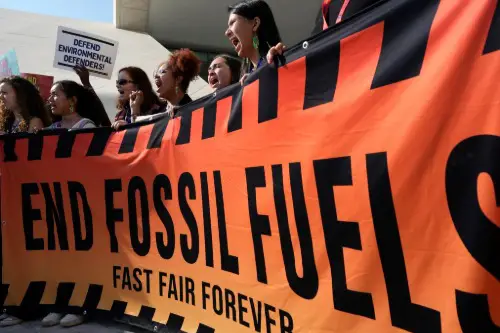1. Minimum Wage Increases Across Multiple States

In 2025, numerous states are raising their minimum wage to reflect the increasing costs of living, a move that will directly impact millions of American workers. Several states will raise their minimum wage to $15 per hour, according to NPR. This is part of a broader trend across the country, with several other states making similar adjustments. For workers in these states, this means more take-home pay to cover daily expenses such as rent, utilities, food, and healthcare.
For many workers, this wage increase could make a significant difference. In states like Delaware, where the cost of living has steadily increased, workers will feel less pressure when it comes to meeting financial obligations. However, some economists argue that while this may boost individual incomes, it could lead to increased costs for businesses, potentially resulting in higher prices for consumers. Despite the debate, this push for higher wages reflects a growing movement to reduce income inequality and ensure that workers can keep up with inflation, especially in major metropolitan areas.
2. Expanded Abortion Protections in New York

New York is taking a bold step in 2025 to safeguard reproductive rights by officially expanding abortion protections in the state constitution, according to The New York State Senate. This amendment explicitly states that individuals cannot be deprived of their reproductive rights, including abortion, due to pregnancy outcomes. With the shifting landscape of abortion laws across the country, this move by New York ensures that abortion access remains protected within the state, even if federal laws change or other states impose restrictions.
This law is particularly significant for those who might face legal challenges when seeking reproductive healthcare. As states like Texas and Alabama have passed stricter abortion laws, many individuals have had to travel out of state for access to healthcare. New York’s decision to cement abortion protections in its constitution is not just a local issue, but a message to other states grappling with similar questions about reproductive rights. It strengthens the commitment to bodily autonomy and could serve as a model for other states looking to protect reproductive rights.
3. Ban on Gender-Affirming Surgeries for Minors in New Hampshire

New Hampshire’s new law, effective in 2025, prohibits minors from undergoing gender-affirming surgeries, a measure that reflects the ongoing national debate about medical treatments for transgender youth, according to The New York Times. While these procedures are rare among children, the law makes it harder for transgender minors to access surgeries without parental consent or a lengthy approval process. This legislation also allows minors who’ve already undergone surgery to file lawsuits against healthcare providers, which could have a chilling effect on medical professionals offering gender-affirming care.
Supporters of the law argue that it is designed to protect children from making irreversible decisions at a young age. However, critics see this as a violation of transgender minors’ rights to access appropriate healthcare and may argue that it places unnecessary burdens on families seeking gender-affirming care for their children. This law is part of a larger trend in several states attempting to restrict access to gender-affirming treatments, and its passage is likely to influence similar legislation in other regions.
4. Stricter Data Privacy Regulations in Texas

Texas is introducing a comprehensive set of data privacy regulations in 2025 that will affect both businesses and consumers, according to Forrester. The Texas Data Privacy and Security Act, among other things, will require companies to provide consumers with clear, easy-to-understand options for opting out of data collection or surveillance practices. Businesses will be expected to give consumers access to their data and allow them to delete personal information if they choose. This new law is a response to increasing concerns about data security and consumer privacy in an era where personal information is often collected, sold, and shared without sufficient oversight.
For consumers, these changes are expected to provide more control over personal information. Many people feel that they are often unaware of the extent to which their data is being harvested and shared. This law will give Texas residents more agency over their digital footprint, holding companies accountable for how they handle personal information. With similar privacy laws already in place or being discussed in other states, this shift could set the standard for data protection nationwide, affecting how tech companies operate across the country.
5. New York’s Protection for Abortion Pill Prescribers

As part of its ongoing efforts to protect reproductive healthcare access, New York has enacted a new law in 2025 that shields abortion pill prescribers from legal challenges, according to Bloomberg Law News. The law allows doctors to omit their names from prescription labels, listing only the healthcare practice that issues the prescription. This protection is aimed at preventing legal action against healthcare providers, particularly those in states where abortion access is under threat. For doctors in states with restrictive abortion laws, this law offers peace of mind and reduces the risk of facing charges simply for providing care.
This law comes in response to the increasing criminalization of abortion services in some states, where providers face lawsuits or criminal charges for offering abortion services. New York’s legislation represents a strong stand in favor of reproductive rights, ensuring that people seeking an abortion in the state can access services without worrying about legal repercussions for their healthcare providers. It also serves as an important example for other states grappling with how to protect healthcare providers amidst a growing trend of legal battles surrounding abortion rights.
6. Tariffs on Imports from Mexico, Canada, and China

In 2025, new tariffs on imports from Mexico, Canada, and China are expected to have a ripple effect on both consumers and businesses across the country. These tariffs are designed to address ongoing trade imbalances and to encourage domestic manufacturing, particularly in industries such as steel, automobiles, and electronics. The 25% tax on imports from Mexico and Canada, along with the 10% tax on Chinese goods, will likely raise the prices of goods such as electronics, vehicles, and consumer products.
The immediate consequence of these tariffs is likely to be an increase in the cost of goods for American consumers. Businesses that rely on imports will be forced to either absorb the costs or pass them onto their customers. Moreover, retaliatory tariffs from the affected countries could further complicate international trade and supply chains. While some view these tariffs as a necessary step to protect American industries, others argue that they could harm consumers and potentially slow down economic recovery.
7. New Federal Guidelines for Electric Vehicles (EVs)

In 2025, the federal government is rolling out new guidelines aimed at making electric vehicles (EVs) more accessible to consumers. These guidelines focus on standardizing charging infrastructure across the country and expanding the network of charging stations, making EVs more convenient for everyday drivers. Additionally, the new policy includes significant incentives for manufacturers to produce electric vehicles at lower costs, with a focus on affordability and range. These changes will help address one of the biggest barriers to EV adoption: the availability of charging stations.
For consumers, this means more charging options and a more streamlined experience when it comes to owning an electric vehicle. Whether you’re commuting to work or taking a road trip, you’ll have more peace of mind knowing that charging stations will be available along the way. As the government continues to push for cleaner energy and reduced carbon emissions, these new federal guidelines will play a pivotal role in reducing the nation’s reliance on fossil fuels and accelerating the transition to sustainable transportation. Expect to see more EV-friendly infrastructure and incentives that make going electric a practical option for more Americans in 2025 and beyond.
8. New Federal Regulations on Refrigerants

In 2025, the federal government is implementing new regulations requiring that HVAC systems, air conditioners, and refrigeration equipment use environmentally-friendly refrigerants. The move comes as part of a broader effort to reduce global warming and tackle the climate crisis. The new rules aim to phase out certain types of refrigerants that contribute to ozone depletion and greenhouse gas emissions, replacing them with safer alternatives. This shift is expected to affect both the manufacturing of new HVAC equipment as well as the servicing of older units.
For homeowners and businesses, this change will likely lead to higher initial costs for purchasing new HVAC systems and appliances, as well as more expensive repairs for existing systems that need to be retrofitted. However, the long-term benefits are expected to include reduced environmental harm, as well as lower energy consumption, leading to potential savings in the future. These changes are a key part of the United States’ commitment to meeting its climate targets and will likely inspire other countries to follow suit in regulating refrigerants.
9. Nationwide Digital Driver’s Licenses

In 2025, the federal government is rolling out a nationwide digital driver’s license (DDL) program, allowing drivers to store their identification and vehicle registration on their smartphones. This digital license can be used in lieu of a physical card for identification purposes, making it easier for people to access and use their IDs when needed. The program is designed to streamline identification and reduce the need for physical documents, offering more convenience for consumers who are used to managing their lives digitally.
This move could significantly improve efficiency, particularly for those who frequently travel or need to verify their identity in situations like banking or security checks. The DDLs will also make it easier for authorities to verify driver information, potentially reducing the incidence of fraud. As technology continues to evolve, this initiative may eventually replace traditional physical licenses altogether, marking a step forward in the digital transformation of government services.
10. Expanded Paid Family Leave in California

In 2025, California will expand its paid family leave program, allowing employees to take time off to care for a family member without sacrificing their income. Under the new law, workers can take up to 12 weeks of paid leave to care for an ill child, parent, or spouse, or to bond with a new child after birth or adoption. This expansion is a significant step toward supporting workers’ needs for time off while maintaining financial stability.
This new policy is designed to support families and reduce the economic burden of caregiving. It allows workers to take time off without worrying about losing their income, making it easier for people to care for their loved ones during challenging times. With more states considering similar measures, California’s move may influence national trends in paid family leave and set a precedent for other regions to follow.
11. Mandatory Financial Literacy Classes in High Schools

In 2025, a new law will require all high school students in the U.S. to complete a financial literacy course before graduation. The course will cover essential topics such as budgeting, credit management, saving for retirement, and understanding student loans. This initiative aims to ensure that young adults enter the workforce with a solid understanding of how to manage their finances and avoid common pitfalls, such as falling into debt or mismanaging credit.
Financial literacy is increasingly seen as a critical life skill that many students do not receive adequate instruction on during their schooling. By requiring this course, schools will help prepare students for the financial challenges they will face as they become adults. This law also serves as an effort to combat the rising student loan debt crisis by teaching students how to manage loans and other financial decisions effectively.
12. Restrictions on Social Media Usage for Minors

A new law set to take effect in 2025 will impose stricter regulations on social media platforms to limit access for minors. Under the new regulations, platforms will be required to verify the ages of users and restrict certain types of content for users under 18. Additionally, social media companies will need to implement parental controls to allow parents to manage their children’s online presence.
This move is driven by growing concerns about the mental health impact of social media on young people. By restricting access to potentially harmful content, including violent or sexually explicit material, the hope is to create a safer online environment for minors. The law is expected to be a point of contention, with many arguing it could infringe on free speech or hinder children’s ability to communicate online, but it also reflects a broader push to protect young people in the digital age.
13. Carbon Emissions Reporting for Large Corporations

In 2025, large corporations will be required to disclose their carbon emissions as part of a new set of federal regulations aimed at tackling climate change. These companies will be expected to report not only direct emissions from their operations but also indirect emissions from their supply chains. This is part of the federal government’s broader effort to hold corporations accountable for their environmental impact and to work towards reducing greenhouse gas emissions.
This law is significant because it places pressure on businesses to adopt more sustainable practices. Companies will need to monitor their emissions more closely and make necessary adjustments to reduce their carbon footprints. As the climate crisis intensifies, these measures are expected to play a key role in meeting the nation’s carbon reduction targets and pushing companies toward a greener, more sustainable future.


